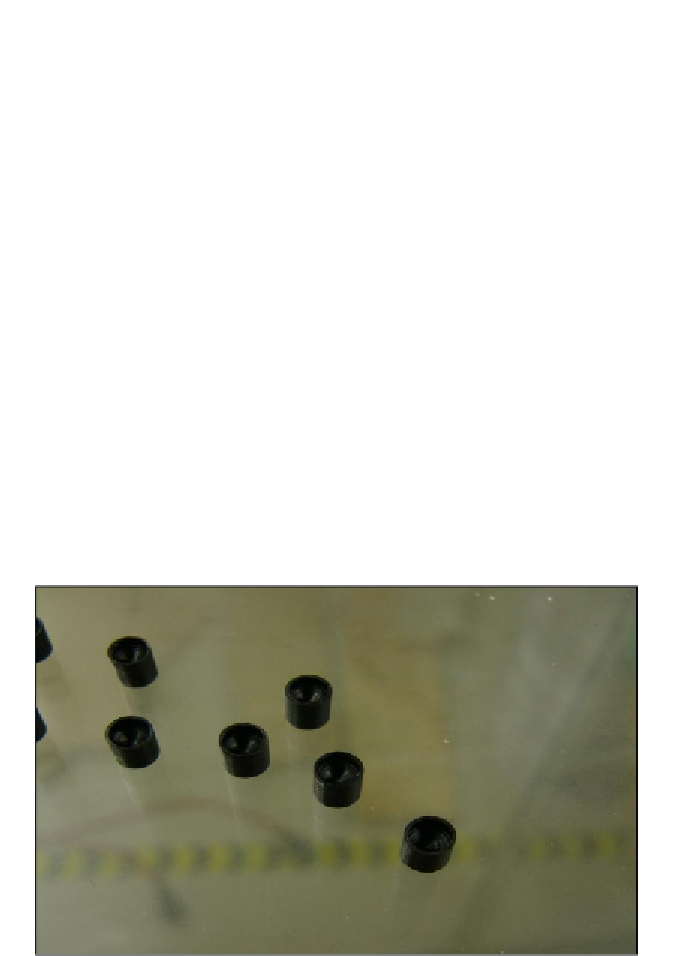Biomedical Engineering Reference
In-Depth Information
The distance between the end of the barrel and the surface of the substrate
was 3.0 inches for all impacts. Once impacted with the substrate, the impact
specimens were cut from the surrounding material, and then mounted for
further examination. Impacts were recorded with a high speed camera, model
Fastcam Ultima 1024 from Itronx Imaging Technologies. Figure 58 shows the
casing, filled with aluminum powder, impacting the aluminum substrate. The
bright spots in the figure are the particles reflecting light, and the black image
impacting the surface is the delrin casing disintegrating. Figure 59 shows
particles clearly striking the substrate before the delrin casing appears in the
frame. This is evidence of air loss occurring in the barrel, and also evidence of
loose particles inside the barrel.
The mounted impact specimens, two steel and two aluminum substrates,
were examined under the light microscope. Each specimen was examined with
various magnifications and in different locations in an attempt to find if
particles form a permanent bond with the substrate. It appears from several
images, after polishing to remove loose particles, that a small number of
particles are bonded to the surface in the case of sample 1, where the fine
aluminum particles were impacted onto the aluminum substrate. Images from
samples 2, 3, and 4 show evidence of erosion, where particles have not bonded
to the substrate. Figure 60 shows images of sample 1 before the impact (bare
substrate) and after the impact with polishing already performed.
Reproduced with permission. Copyright retained by Inderscience Publishers.
Figure 57. Delrin Casings for Powder Delivery.

